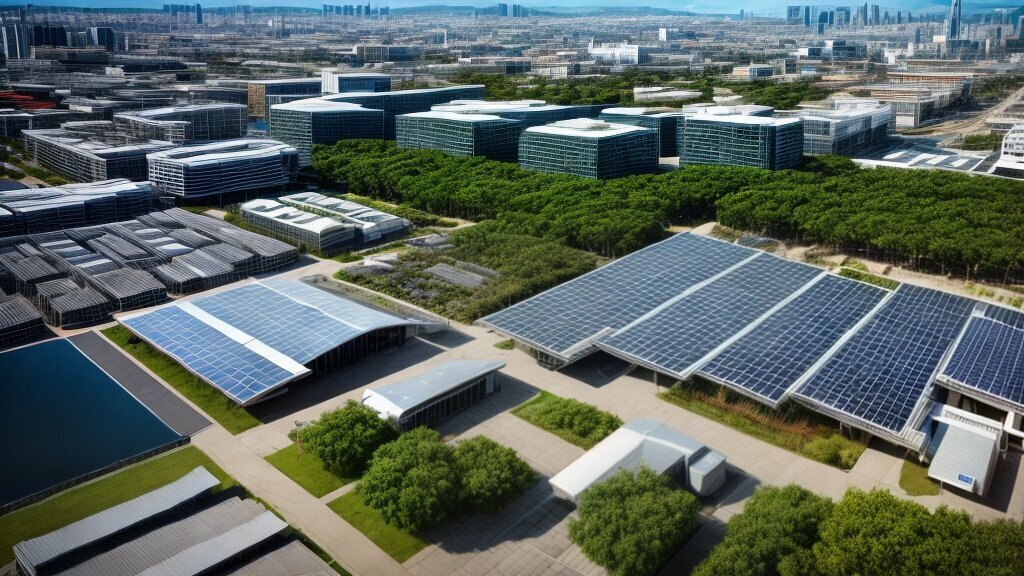Cultural Heritage and Resilience: Balancing Preservation with Adaptation
Welcome to our article on Cultural Heritage and Resilience. Cultural heritage plays a vital role in shaping our societies and preserving our rich history and traditions. However, as we face new environmental and societal challenges, it is essential to strike a balance between preserving cultural heritage and adapting it to meet modern needs.
In this article, we explore the concept of cultural heritage and its various forms, including tangible and intangible heritage, cultural landscapes, and historic sites. We examine the resilience of cultural heritage and how it can contribute to the sustainability of communities and societies. We also examine the impact of climate change on cultural heritage, the role of community engagement in heritage preservation, innovative approaches to conservation and adaptive reuse, and the potential of technology and digital preservation in enhancing cultural heritage resilience.
Throughout the article, we’ll be discussing challenges and opportunities in achieving cultural heritage resilience and looking at successful case studies. Finally, we’ll explore future perspectives on cultural heritage resilience and the potential solutions and strategies to address emerging trends and challenges.
Key Takeaways:
- Cultural heritage is essential to preserving our history and traditions
- We must strike a balance between preservation and adaptation to meet modern needs
- Cultural heritage resilience is crucial to the sustainability of communities and societies
- Climate change poses significant challenges to cultural heritage
- Community engagement and education are crucial to heritage preservation
- Innovation and technology can enhance cultural heritage resilience
- Successful case studies showcase the potential of cultural heritage resilience
- Future perspectives must consider emerging trends and challenges
Understanding Cultural Heritage
Cultural heritage encompasses a broad range of tangible and intangible assets that are considered valuable to a society’s cultural identity. These assets may include sites, monuments, artifacts, practices, and traditions that have been passed down through generations. Cultural heritage is often tightly linked to the natural environment and can include cultural landscapes, such as the rice paddies of Bali, or historic townscapes, such as those found in Europe.
The United Nations Educational, Scientific and Cultural Organization (UNESCO) defines cultural heritage as “the legacy of physical artifacts and intangible attributes of a group or society that is inherited from past generations, maintained in the present, and bestowed for the benefit of future generations.”
There are many forms of cultural heritage, each requiring unique preservation methods. Tangible heritage refers to physical objects, such as buildings, artifacts, and documents. Intangible heritage, on the other hand, refers to cultural practices, knowledge, and traditions, such as music, cuisine, and rituals. Both forms of heritage require preservation and conservation efforts to ensure their continued existence for future generations.
Cultural Landscapes
Cultural landscapes are a particularly unique form of cultural heritage that encompasses both tangible and intangible elements. They are defined as “distinct geographical areas or properties uniquely representing the combined work of nature and of man,” according to UNESCO. These landscapes often reflect the relationship between a community and their natural environment, such as the terraced rice fields in China or the vineyards in the Douro Valley in Portugal.
Cultural landscapes require a holistic approach to conservation that takes into account not only the physical landscape but also the cultural practices and traditions that have shaped it. Effective management of cultural landscapes requires collaboration between stakeholders, including local communities, government agencies, and conservation organizations.
Historic Sites
Historic sites are physical places that represent significant events, people, or cultural movements. These sites may include buildings, monuments, or archaeological sites that possess historic, aesthetic, or cultural value. Many historic sites are considered culturally significant due to their association with a particular community or historical event. Examples include the pyramids of Egypt, the Great Wall of China, and the Taj Mahal in India.
Preserving historic sites requires careful planning and management, often involving site-specific conservation efforts and community engagement initiatives. Historic sites are also vulnerable to the effects of climate change, which can damage or destroy these assets through increased erosion, flooding, or extreme weather events.

The Resilience of Cultural Heritage
The resilience of cultural heritage is crucial for ensuring its continued relevance and significance in society. Cultural heritage has the ability to adapt and withstand challenges, contributing to the sustainability of communities and societies.
At its core, cultural heritage is rooted in the identity and traditions of communities. It represents the tangible and intangible expressions of cultural diversity, ranging from historic sites and monuments to traditional crafts and practices.
The resilience of cultural heritage is dependent on various factors, such as effective management, funding, and community engagement. Long-term planning and strategies are needed to ensure the preservation of cultural heritage for future generations.
However, resilience in cultural heritage also requires adaptation to contemporary challenges, such as climate change, urban development, and globalization. Efforts to enhance the resilience of cultural heritage must balance preservation with adaptation, ensuring that heritage sites can fulfill their traditional roles while also adapting to changing societal needs.
In the face of these challenges, cultural heritage can play a significant role in promoting sustainability and resilience. By preserving and promoting cultural diversity, cultural heritage can foster a sense of social cohesion and environmental stewardship.

One example of cultural heritage resilience is the city of Venice, which has been facing the threat of rising sea levels and flooding for centuries. To protect the city’s cultural heritage sites, a system of flood barriers known as MOSE has been developed. The project combines historical preservation with contemporary engineering, ensuring that Venice can continue to thrive as a vibrant cultural center.
Another example is the UNESCO World Heritage site of Angkor in Cambodia. The site was severely damaged during the country’s civil war and the Khmer Rouge regime. However, efforts to restore and preserve the site have been ongoing, with the involvement of local communities and international organizations. The restoration efforts not only preserve the cultural heritage of Cambodia, but also provide economic opportunities for local communities through tourism.
In conclusion, the resilience of cultural heritage is essential for preserving cultural diversity and promoting sustainability. Achieving resilience in cultural heritage requires a balance between preservation and adaptation to contemporary challenges, as well as effective management, funding, and community engagement. By upholding the resilience of cultural heritage, we can ensure its continued relevance and significance in society for generations to come.
Climate Change and Cultural Heritage
Cultural heritage sites and landscapes are exposed to multiple climate change risks. Extreme weather events, melting glaciers, sea-level rise, and coastal erosion are among the major threats that can damage or destroy cultural assets. Climate change impacts such as sea-level rise, storm surges, and flooding pose a significant threat to coastal heritage sites and historic cities.
The geographic location of cultural heritage sites also makes them vulnerable to other climate-related risks. For example, heritage sites in arid or semi-arid regions face the risk of desertification caused by climate change, which can lead to degradation of cultural landscapes.
There are several adaptation strategies that can be employed to enhance the resilience of cultural heritage sites in the face of climate change risks. These include nature-based solutions such as the restoration of wetlands and mangroves to provide natural coastal protection as well as the development of coastal protection and management plans.
| Climate change impacts on cultural heritage | Adaptive strategies |
|---|---|
| Rising sea levels | Coastal protection and management planning |
| Extreme weather events | Building and structural improvements |
| Desertification | Restoration of natural landscapes and ecosystems |
It is also essential to involve local communities in the development and implementation of adaptation strategies. Community-based approaches that combine traditional knowledge with modern technologies can lead to effective solutions that incorporate local needs and cultural values.
The conservation and restoration of cultural heritage is not only necessary for safeguarding cultural heritage for future generations but also for building resilient communities. Heritage sites can contribute to the cultural sustainability and economic development of a region. Therefore, it is essential to continue efforts to enhance the resilience of cultural heritage in the face of climate change risks.

Community Engagement in Heritage Preservation
Community engagement is an essential element in preserving cultural heritage. It involves the participation of the local community in decision-making processes, fostering a sense of ownership, and empowering them to become stewards of their cultural heritage. Effective cultural heritage management should consider the community’s needs and perspectives, ensuring that the heritage’s preservation aligns with their values and aspirations.
Community engagement can take different forms, such as participatory workshops, public consultations, and community-led initiatives. These activities provide opportunities for the community to contribute to the preservation and management of cultural heritage. It fosters a sense of pride and responsibility among community members, which motivates them to take an active role in safeguarding their cultural heritage.
| Benefits of Community Engagement in Heritage Preservation | Examples |
|---|---|
|
|
Effective community engagement should be a continuous process, involving ongoing communication, education, and capacity building. Building strong and sustainable relationships between cultural heritage managers and local communities can create an enabling environment for the preservation of cultural heritage.
“Involving the local community in cultural heritage management is crucial for the preservation of cultural heritage and its relevance for future generations.” – Dr Susan Oyat, Heritage Conservation Expert
Cultural heritage is an essential component of our collective identity, connecting us to our past and shaping our future. Effective preservation and management of cultural heritage require collaboration and cooperation between different stakeholders, with the community playing a central role.

Adapting Heritage Sites for Resilience
Preserving cultural heritage is not solely about protecting historical sites and artifacts, but also about ensuring their continued relevance and usefulness to society. The adaptive reuse of heritage sites is becoming increasingly popular as a way of achieving sustainability while retaining traditional values.
One prime example is the conversion of abandoned industrial sites into cultural and heritage destinations. Such sites are often situated in urban areas and can be transformed into vibrant cultural hubs that attract visitors and create economic opportunities for local communities.
| Benefits of Adaptive Reuse | Challenges of Adaptive Reuse |
|---|---|
| Preservation of cultural identity | Costs of restoration and conversion |
| Enhanced community engagement | Regulatory and legal obstacles |
| Economic benefits for local communities | Difficulties in finding suitable uses for certain sites |
Adaptive reuse has also been successfully applied to rural heritage sites, such as abandoned farmsteads or traditional villages. Such sites can be transformed into sustainable tourism destinations that offer visitors an authentic cultural experience while creating economic opportunities for local communities.
The reuse of heritage sites can also be a way of adapting to the challenges posed by climate change. For example, some sites have been transformed into spaces that integrate renewable energy sources, such as solar panels or wind turbines. This approach not only reduces carbon emissions but also enhances the resilience of heritage sites to extreme weather events.

Overall, the adaptive reuse of heritage sites is a flexible and innovative approach to cultural heritage preservation that can benefit both society and the environment. By balancing preservation with adaptation, we can ensure the resilience and relevance of cultural heritage for generations to come.
Challenges and Opportunities in Cultural Heritage Resilience
Cultural heritage resilience faces numerous challenges, ranging from insufficient funding to inadequate policy frameworks. These challenges pose threats not only to the preservation of cultural heritage but also to its sustainability in the face of evolving cultural and environmental pressures.
One significant challenge is the lack of collaboration between stakeholders involved in cultural heritage preservation. This includes government agencies, cultural organizations, and local communities. A deficiency in coordination and communication may lead to suboptimal outcomes and disparate preservation efforts, which may not be as effective in ensuring cultural heritage resilience.
Another challenge is the need for long-term planning and sustainable strategies to ensure the resilience of cultural heritage. Short-term solutions may provide temporary relief but are not suitable for the sustainability of cultural heritage in the face of multifaceted environmental and societal pressures. Therefore, there is a need for a long-term perspective and solutions that are suitable for the specific requirements of each cultural heritage site or artifact.
One opportunity for enhancing cultural heritage resilience is to integrate cultural heritage into sustainable development agendas. This involves incorporating cultural heritage considerations into urban planning, disaster risk reduction, and sustainable tourism. By doing so, we can not only preserve cultural heritage but also leverage it as a tool for development and societal well-being.
Furthermore, the use of technology and digital preservation techniques presents a promising opportunity for enhancing cultural heritage resilience. Digital preservation techniques, such as 3D scanning and virtual reality, allow us to document and preserve cultural heritage in a manner that is both accessible and sustainable. These techniques may also facilitate education and awareness-raising activities that can enhance public appreciation of cultural heritage and promote long-term preservation efforts.
In conclusion, the resilience of cultural heritage faces numerous challenges, including inadequate funding, a lack of coordination between stakeholders, and the need for long-term planning. However, there are significant opportunities for enhancing cultural heritage resilience, such as integrating cultural heritage into sustainable development agendas and leveraging technology and digital preservation techniques. By addressing these challenges and seizing these opportunities, we can ensure the long-term preservation and sustainability of our cultural heritage for future generations.

Technology and Digital Preservation
In the digital age, advances in technology have provided new opportunities for cultural heritage preservation and resilience. Digital preservation offers a way to protect and share cultural heritage assets with a wider audience, while minimizing the risk of damage or loss.
One example of digital preservation is 3D scanning, which allows for the creation of digital models of cultural artifacts and sites. These models can be used to create virtual tours and educational resources, as well as for research and conservation purposes.
Virtual reality is another technology that has been applied to cultural heritage preservation. By creating immersive experiences, virtual reality allows visitors to engage with cultural heritage in new and interactive ways. This can help to increase awareness and appreciation of cultural heritage, as well as support conservation efforts.
However, there are also challenges associated with digital preservation. One concern is the potential for over-reliance on digital technology, which may undermine the value of physical cultural heritage. There is also the risk of data loss or corruption, which could result in the permanent loss of important cultural heritage assets.
Despite these challenges, the potential benefits of digital preservation for cultural heritage resilience are significant. The use of technology can help to increase access and engagement with cultural heritage, while also providing new tools and methods for conservation and preservation.

Incorporating technology into cultural heritage preservation offers new opportunities for digital conservation, virtual engagement with cultural heritage, and innovative preservation techniques.
Education and Awareness for Cultural Heritage Resilience
The promotion of education and awareness is crucial in ensuring the resilience of cultural heritage. It is vital in fostering a sense of responsibility towards the preservation and protection of cultural heritage sites. It is also important in highlighting the significance of cultural heritage and its role in shaping societies and communities.
Through educational initiatives, cultural organizations, and community-based programs, people can learn about the value of cultural heritage and develop an understanding of its importance in society. This involves creating opportunities for people to experience and engage with cultural heritage sites and artifacts, integrating them into the cultural fabric of communities.
One way of promoting education and awareness is through capacity building initiatives that empower local communities to become stewards of their cultural heritage. This involves providing training and skills development programs that equip individuals with the knowledge and tools needed to manage and preserve cultural heritage sites.

Another means of promoting education and awareness is through the development of digital resources that make cultural heritage more accessible to the general public. Digital tools such as virtual reality and 3D scanning can be used to document and preserve cultural heritage sites and artifacts, creating virtual tours and online exhibits that can be accessed around the world.
“Education and awareness are crucial in fostering a sense of responsibility towards the preservation and protection of cultural heritage sites.”
Ultimately, education and awareness are key to ensuring the resilience of cultural heritage. By promoting a deeper understanding of cultural heritage and its importance, individuals and communities can become more invested in its preservation and work towards its long-term sustainability.
Case Studies in Cultural Heritage Resilience
In recent years, numerous cultural heritage sites around the world have faced challenges and threats to their preservation. However, with the right combination of preservation and adaptation strategies, many of these sites have demonstrated remarkable resilience. Here are just a few examples:
1. The Great Barrier Reef, Australia
The Great Barrier Reef, one of the world’s most biodiverse and culturally significant marine environments, has faced numerous threats in recent years, including rising sea temperatures and pollution. In response, the Australian Government has implemented a number of measures to protect the reef, including stricter regulations and increased investment in research and monitoring. Additionally, the government has launched campaigns to raise awareness about the reef’s cultural and ecological significance among local communities and tourists alike.
2. Jerusalem’s Old City Walls, Israel
Jerusalem’s Old City Walls, which date back to the Ottoman period, have faced numerous challenges in recent years. These challenges include exposure to extreme weather, pollution and degradation. In response, the Israeli government funded an extensive restoration project, which included the use of state-of-the-art conservation techniques, and involved close collaboration with local communities and cultural heritage experts.
3. The Alhambra, Spain
The Alhambra, a palace and fortress complex located in Granada, Spain, has been a UNESCO World Heritage Site since 1984. In recent years, the site faced numerous challenges, including overcrowding and the impact of mass tourism. In response, the Spanish government has implemented a number of measures to protect the site, including limiting visitor numbers and investing in sustainable tourism initiatives. The government has also worked closely with local communities to ensure that their cultural heritage is respected and preserved.
These case studies demonstrate that with the right combination of preservation and adaptation strategies, cultural heritage sites can withstand a wide range of challenges and continue to contribute to the resilience and sustainability of communities around the world.

Future Perspectives on Cultural Heritage Resilience
As the world continues to face unprecedented challenges, the resilience of cultural heritage is becoming increasingly important. Emerging trends and challenges are reshaping the way we think about cultural heritage, and new solutions are required to ensure its long-term sustainability and relevance.
Integrating Cultural Heritage into Sustainable Urban Planning
One of the key trends in cultural heritage resilience is the integration of heritage into sustainable urban planning. By promoting the use of traditional building materials and designs, urban planners can help to preserve the cultural identity of cities. Furthermore, cultural heritage can provide a sense of continuity and community in rapidly changing urban environments.
Promoting Sustainable Tourism
Sustainable tourism is another emerging trend in cultural heritage resilience. By promoting a responsible approach to tourism, cultural heritage can be preserved and protected while also contributing to local economies. Sustainable tourism initiatives can also provide a platform for local communities to share their culture and traditions with visitors.
Enhancing Disaster Risk Reduction Efforts
The impact of climate change on cultural heritage has highlighted the need for effective disaster risk reduction strategies. These strategies should be tailored to the specific needs of cultural heritage sites and landscapes. By integrating cultural heritage into disaster risk reduction efforts, we can help to ensure that our cultural heritage is protected from the threat of natural disasters.

Embracing Technology for Digital Preservation
Digital preservation is another important aspect of cultural heritage resilience. By embracing technology, we can document and preserve cultural heritage in new and innovative ways. 3D scanning, virtual reality, and other digital tools can help to bring cultural heritage to life for future generations.
Building Partnerships and Collaboration
Finally, building partnerships and collaboration is key to achieving cultural heritage resilience. By working together, stakeholders can pool resources and expertise to address the challenges facing cultural heritage. Collaboration between local communities, governments, NGOs, and other stakeholders can help to ensure that cultural heritage is preserved for future generations.
Conclusion
In conclusion, balancing cultural preservation with adaptation is crucial for ensuring the resilience of cultural heritage. Cultural heritage sites and landscapes are not just markers of history and identity but also have the potential to contribute to the sustainability of communities and societies. It is imperative that long-term planning and strategies are developed to ensure their resilience for future generations.
The challenges of cultural heritage resilience are many, including funding constraints, policy frameworks, and the need for collaboration between different stakeholders. However, the potential benefits of integrating cultural heritage into sustainable development agendas are immense.
Looking to the Future
As we look to the future, emerging trends and challenges in cultural heritage resilience must be taken into account. In particular, the integration of cultural heritage into urban planning, sustainable tourism, and disaster risk reduction efforts should be explored further.
We must also continue to raise awareness and educate future generations about the value of cultural heritage and their role in preserving it. Through community engagement and empowerment, we can ensure that cultural heritage sites and landscapes continue to be protected and cherished for years to come.
FAQ
Q: What is cultural heritage and resilience?
A: Cultural heritage and resilience refers to the balancing act of preserving cultural traditions and adapting to modern challenges. It emphasizes the importance of safeguarding cultural heritage for future generations.
Q: What does cultural heritage encompass?
A: Cultural heritage includes tangible and intangible assets such as historic sites, cultural landscapes, and traditional practices.
Q: Why is cultural preservation important?
A: Cultural preservation ensures that our heritage is protected and maintained, contributing to the identity and continuity of communities.
Q: How does cultural heritage contribute to resilience?
A: Cultural heritage can contribute to the sustainability of communities and societies by providing a sense of identity, fostering social cohesion, and supporting economic development.
Q: What are the impacts of climate change on cultural heritage?
A: Climate change poses various risks to cultural heritage, including increased vulnerability to extreme weather events, rising sea levels, and erosion.
Q: How can communities be engaged in heritage preservation?
A: Engaging local communities in decision-making processes and empowering them to take ownership of their cultural heritage is crucial for effective preservation.
Q: What are adaptive strategies for heritage sites?
A: Adaptive strategies involve employing innovative approaches to conservation, restoration, and adaptive reuse to enhance the resilience of heritage sites.
Q: What are the challenges and opportunities in cultural heritage resilience?
A: Funding constraints, policy frameworks, and collaboration between stakeholders are some of the challenges faced in achieving cultural heritage resilience. However, integrating cultural heritage into sustainable development agendas presents opportunities for long-term resilience.
Q: How does technology contribute to cultural heritage preservation?
A: Technology, such as 3D scanning and virtual reality, can be used for digital preservation, documentation, and education purposes.
Q: What is the role of education and awareness in cultural heritage resilience?
A: Education and awareness play a vital role in raising awareness about the value of cultural heritage and fostering a sense of responsibility towards its preservation.
Q: Can you provide examples of cultural heritage resilience?
A: There are numerous successful examples of cultural heritage resilience, where preservation efforts have been combined with adaptation strategies to ensure long-term sustainability and relevance.
Q: What does the future hold for cultural heritage resilience?
A: The future of cultural heritage resilience involves addressing emerging trends and challenges, integrating heritage into urban planning, sustainable tourism, and disaster risk reduction efforts.








